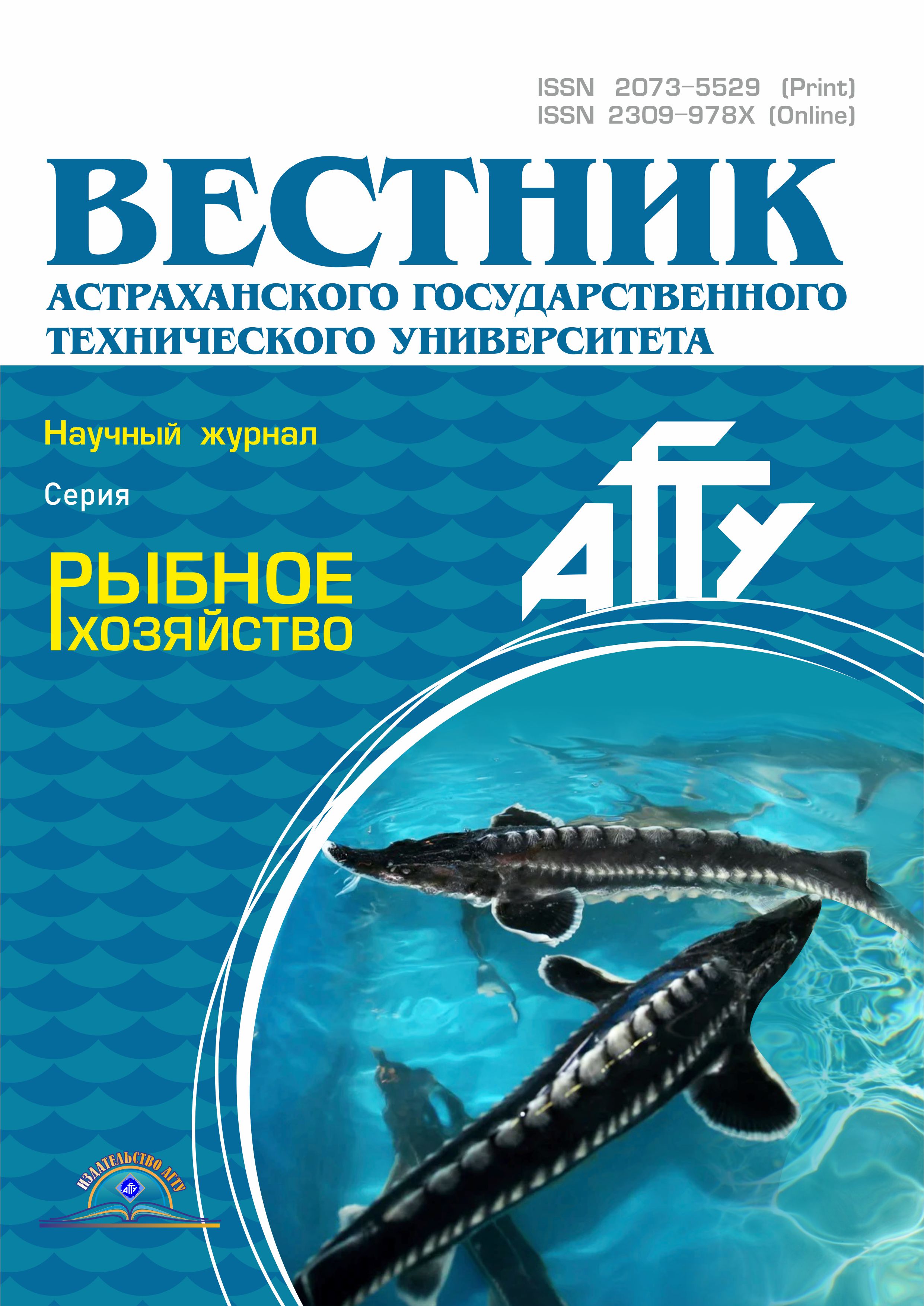Россия
Россия
ГРНТИ 34.39 Физиология человека и животных
ГРНТИ 62.13 Биотехнологические процессы и аппараты
ГРНТИ 69.01 Общие вопросы рыбного хозяйства
ГРНТИ 69.25 Аквакультура. Рыбоводство
ГРНТИ 69.31 Промышленное рыболовство
ГРНТИ 69.51 Технология переработки сырья водного происхождения
ГРНТИ 87.19 Загрязнение и охрана вод суши, морей и океанов
The drift net is one of the most used fishing gear in Benin. It is easy to use and requires very little energy. The net has high interselectivity for ground fish that gives mixed results in many regions. Physical impact of drift nets on the seabed is not a matter of concern. The ecological risk from interselectivity of the net is also insignificant and mainly occurs as a result of their abundant usage, for example, by the artisanal fishermen deployed in the area of fishing during the strong sea conditions. The purest, in terms of ecology, nets are gillnets for the sardinella catching, which are placed at 10 cm deep below the surface with numerous floats. They drift freely under the influence of the water current or with the boats if they are moored. The old model of the net is used as an ecologically pure drift net at 12 to 20 m deep with a length of 360-400 meters per a set. A fisherman can deploy about 4-5 sets of sardinella nets. Madeiran sardinella (Sardinella maderensis) is the most widespread sardinella species in Benin continental shelf. Round sardinella are very few in the catch. The fishing objects are generally called sardinella. Fishing nets are called Sardinella nets. The number of fishes for the old kind of net varied from 120 to 600 fishes per 3.5 kg, and for the new model - 40 fishes per 5 kg. The fisherman's annual revenue increases from 2500 to 3000 CFA francs (Financial collaboration of the Countries of the Central Africa) while using the old kind of net and to 4000 CFA francs when using the new one. Respect of this selectivity participates in renewal of the stock.
drift net, gear, Sardinella maderensis, fishing objects, selectivity
1. Bama B. B. Contribution à l’étude de la pêche maritime au Togo / B. B. Bama // Thèse de docteur vétérinaire. EISMV, Dakar, Sénégal, 1984. 148 p.
2. Anon. Surveys of the small pelagic fish resources of Côte d’Ivoire and Ghana, 12-20 October 1989. NORAD/UNDP/FAO Program. Reports of surveys with R/V Dr. Fridtjof Nansen. Institute of Marine Research, Bergen, November 1989. 14 p.
3. Pliya J. La pêche dans le Sud-Ouest du Bénin: étude de géographie appliquée sur la pêche continentale et maritime / J. Pliya. ACCT-Paris, 1980. 296 p.
4. Sohou Z. Structure et paramètres de la partie antérieure des chaluts pélagiques pour la pêche dans l'Atlantique Centre Est. / Z. Sohou // Science Naturelle et Technique. Moscou. 2010. №2. P. 466-469.
5. Sohou Z. La pisciculture au Bénin: de la tradition à la modernisation / Z. Sohou, R. C. Houédjissin, N. R. A. Ahoyo // Bulletin de la Recherche Agronomique du Bénin. 2009. N 66. P. 49-59.
6. Sohou Z. Sélectivité du filet à sardinelle pour la capture des sardinelles (Sardinella maderensis) au Bénin / Z. Sohou, R. C. Houédjissin, N. R. A. Ahoyo, D. E. et Fiogbe // Fiche Technique dépôt légal №6359 du 26 Septembre 2012, 3ème trimestre. Bibliothèque Nationale (BN) du Bénin. 4 p.
















